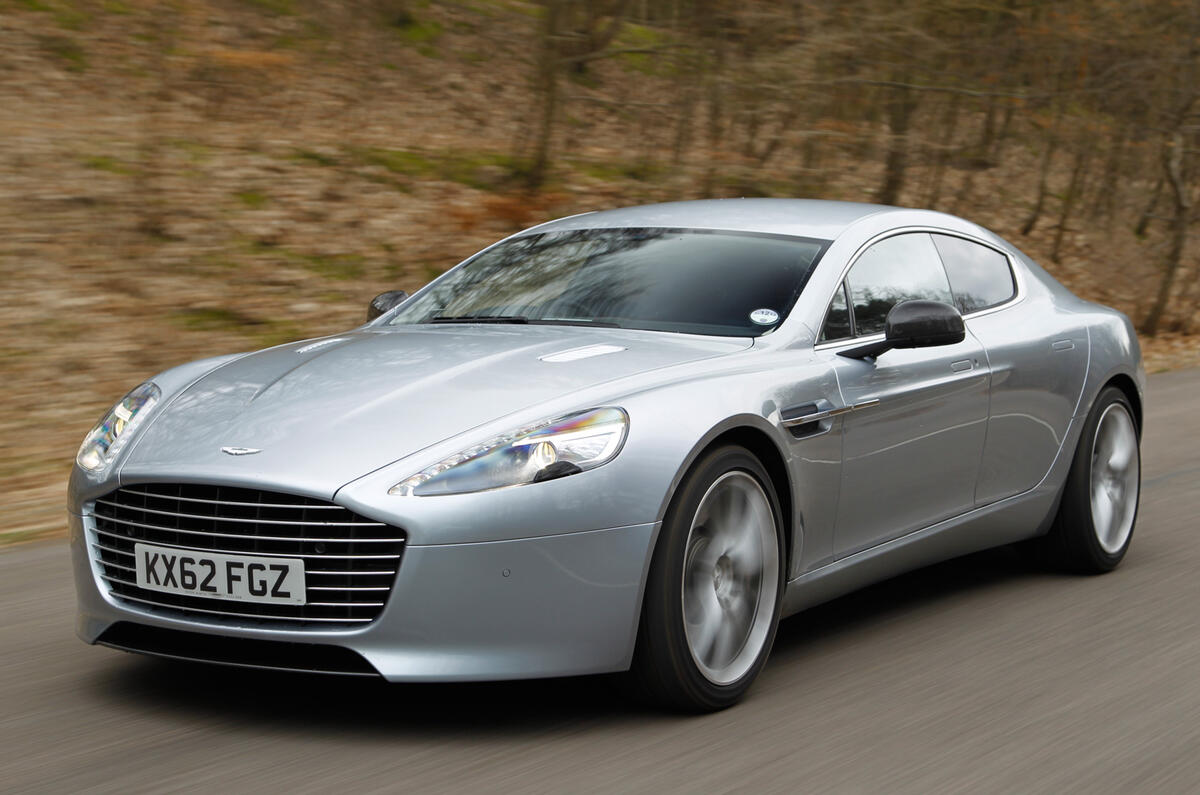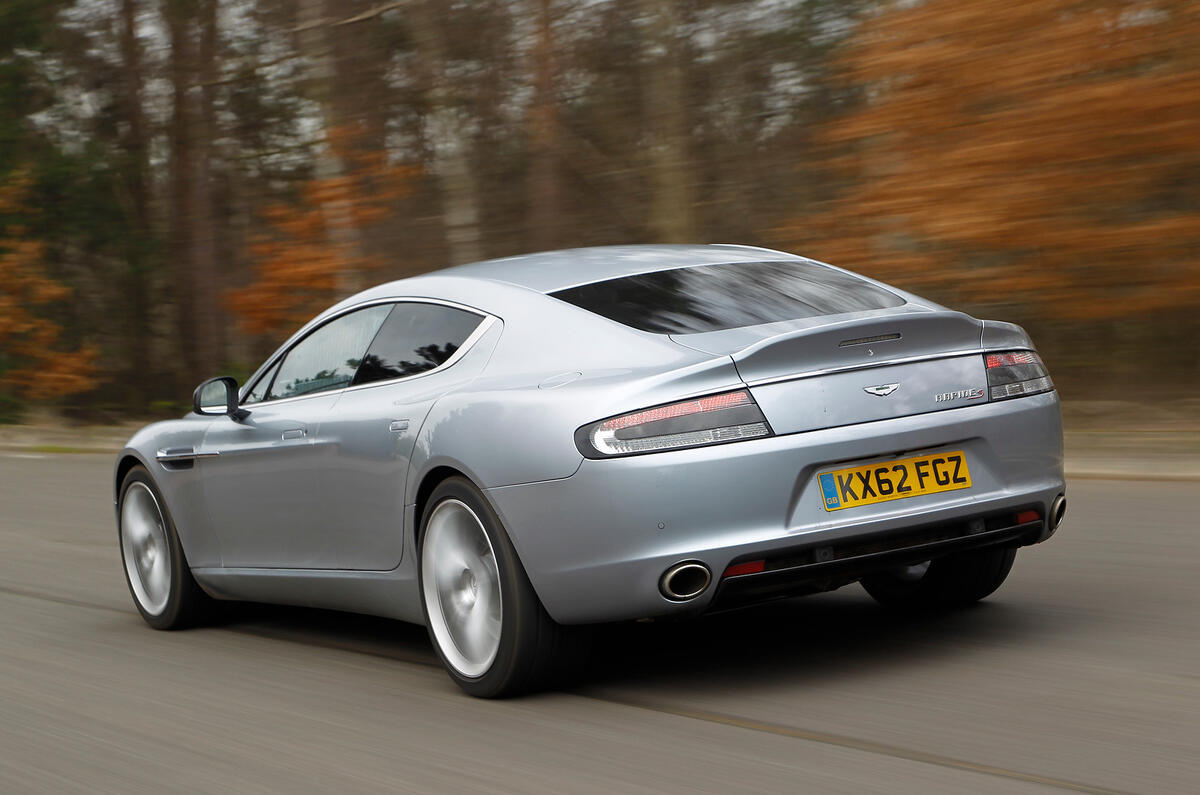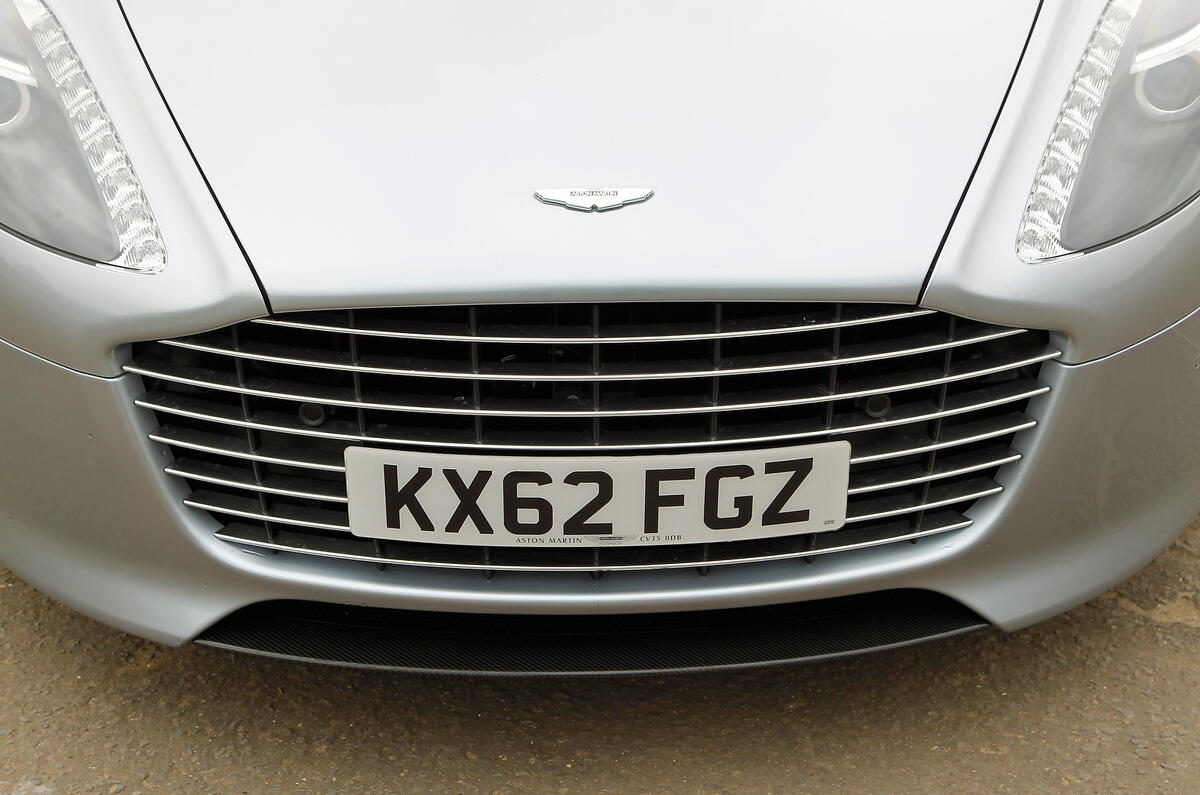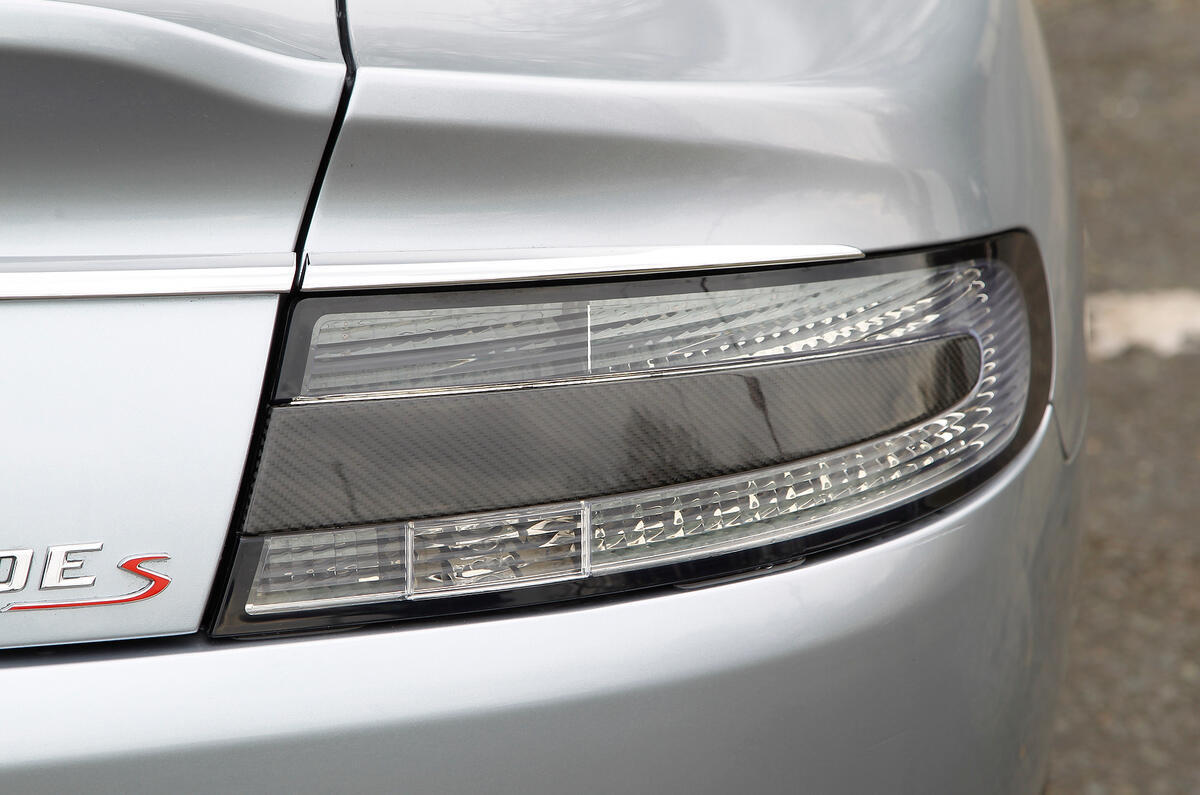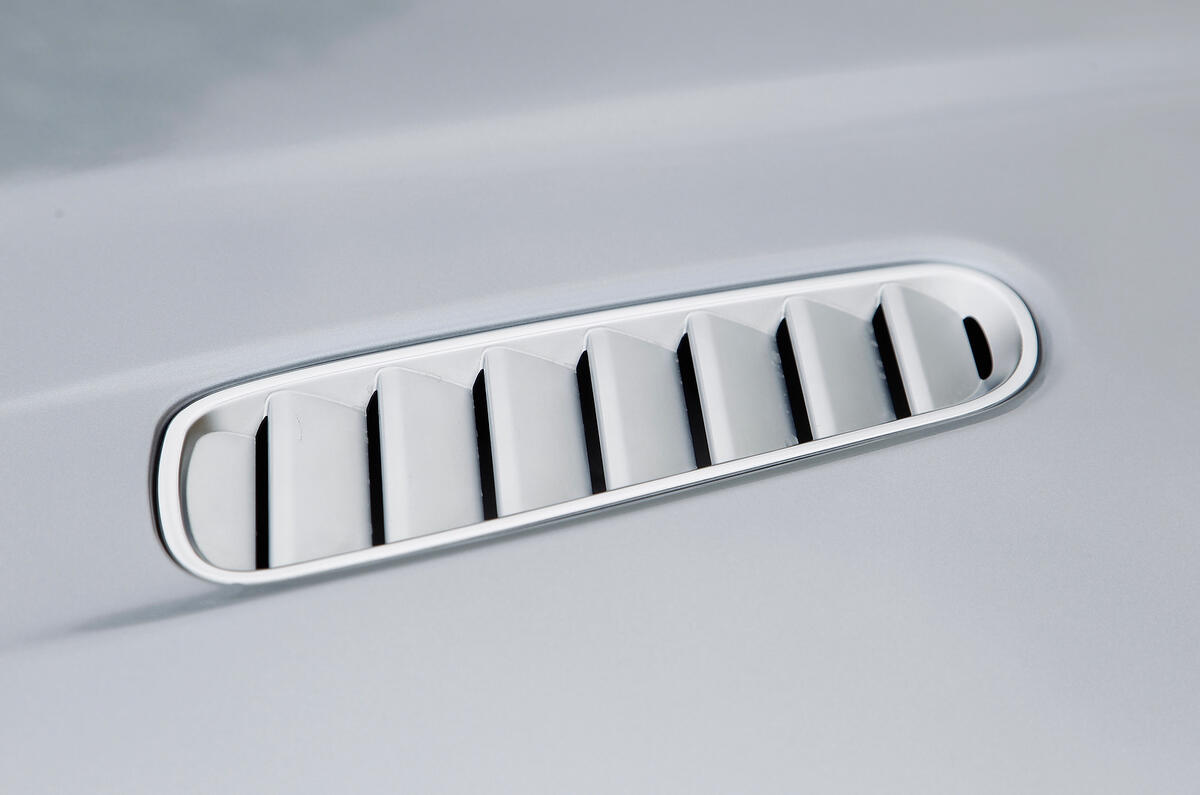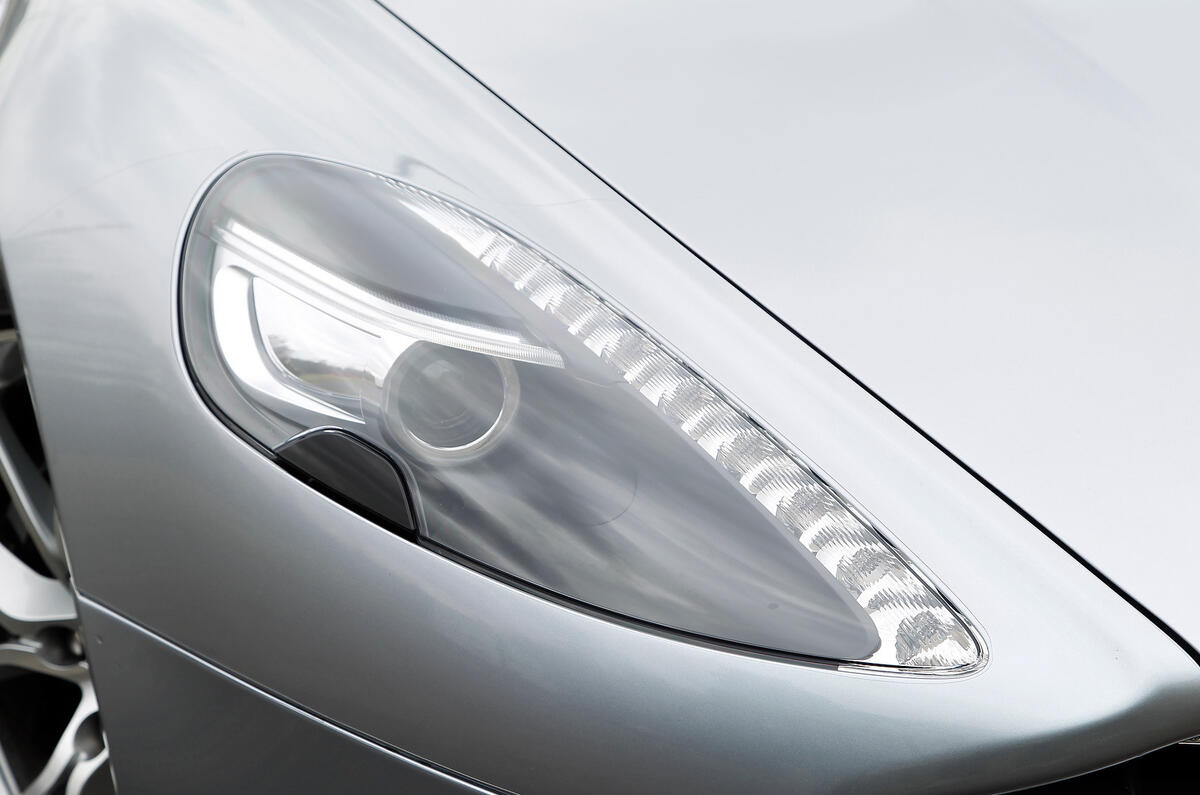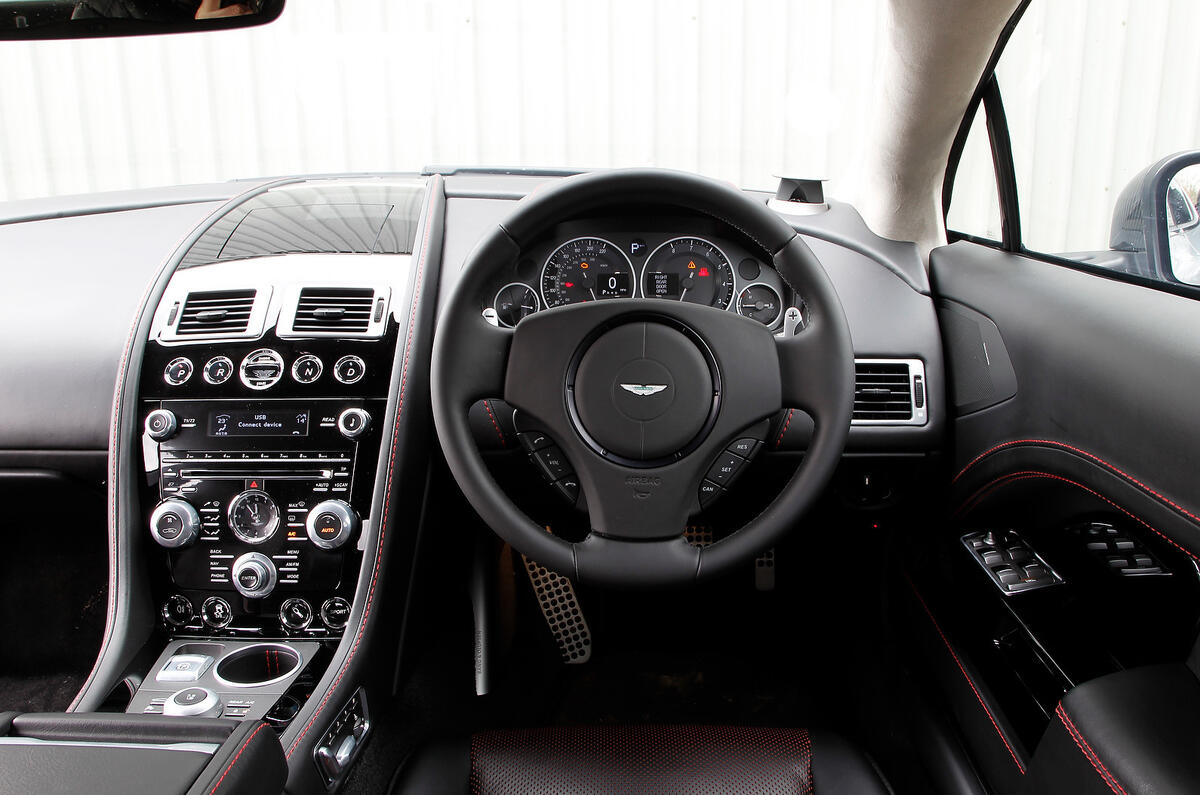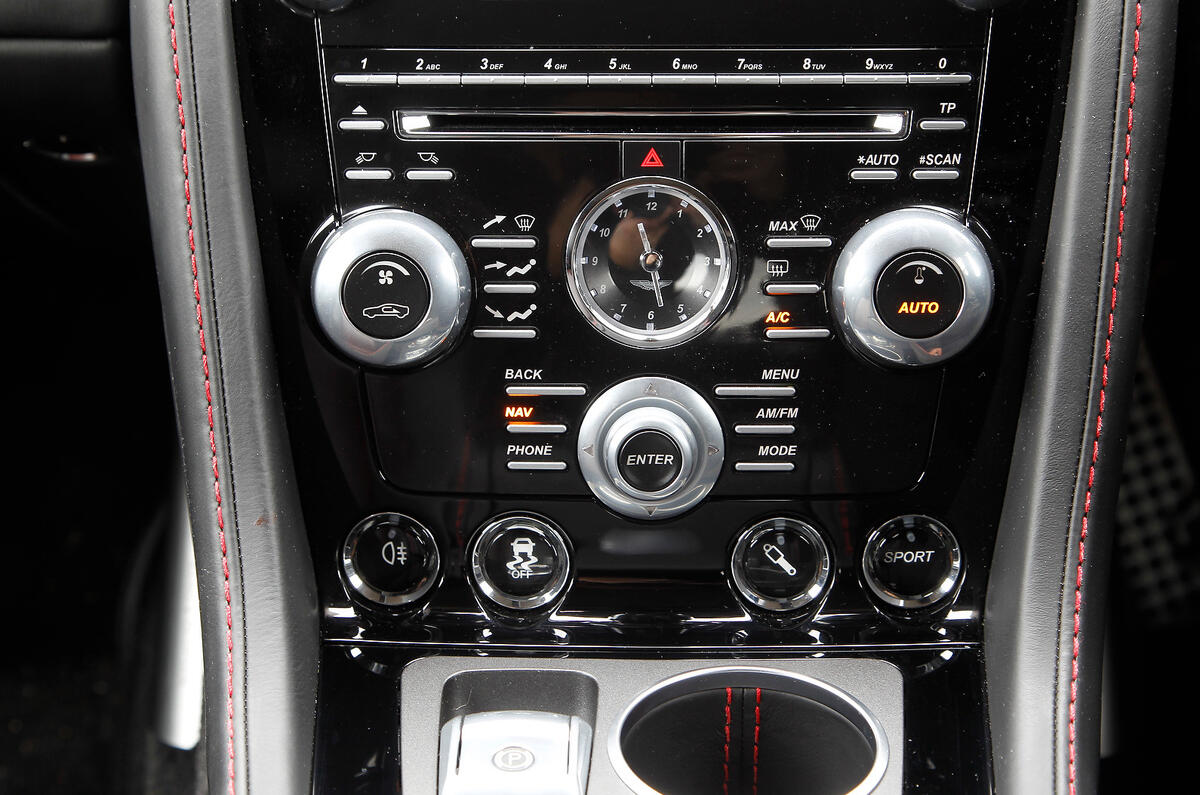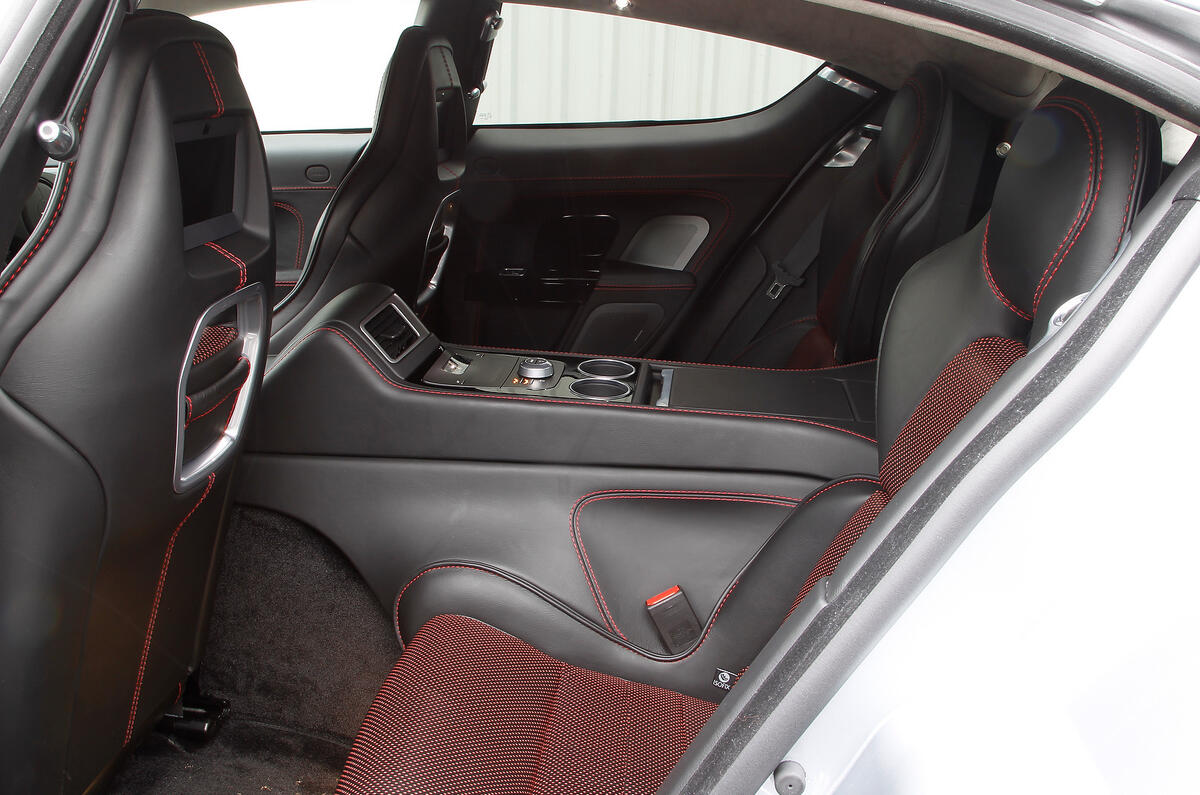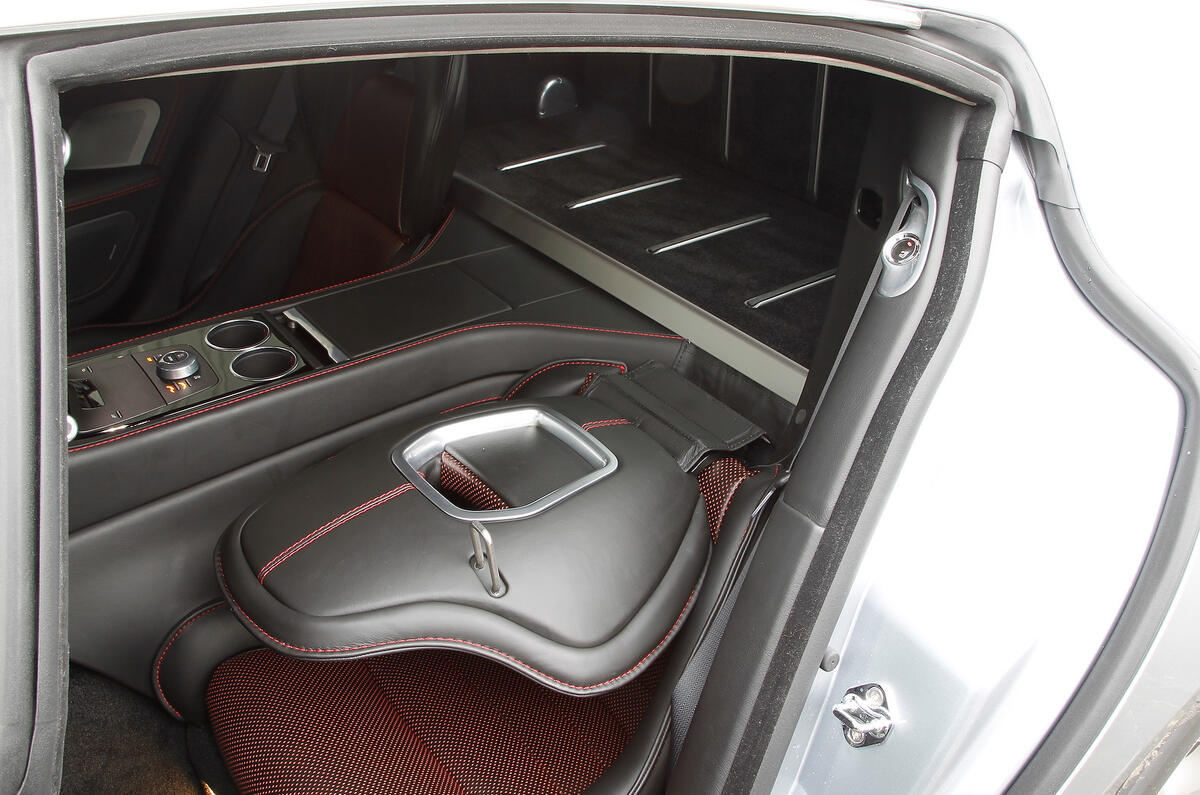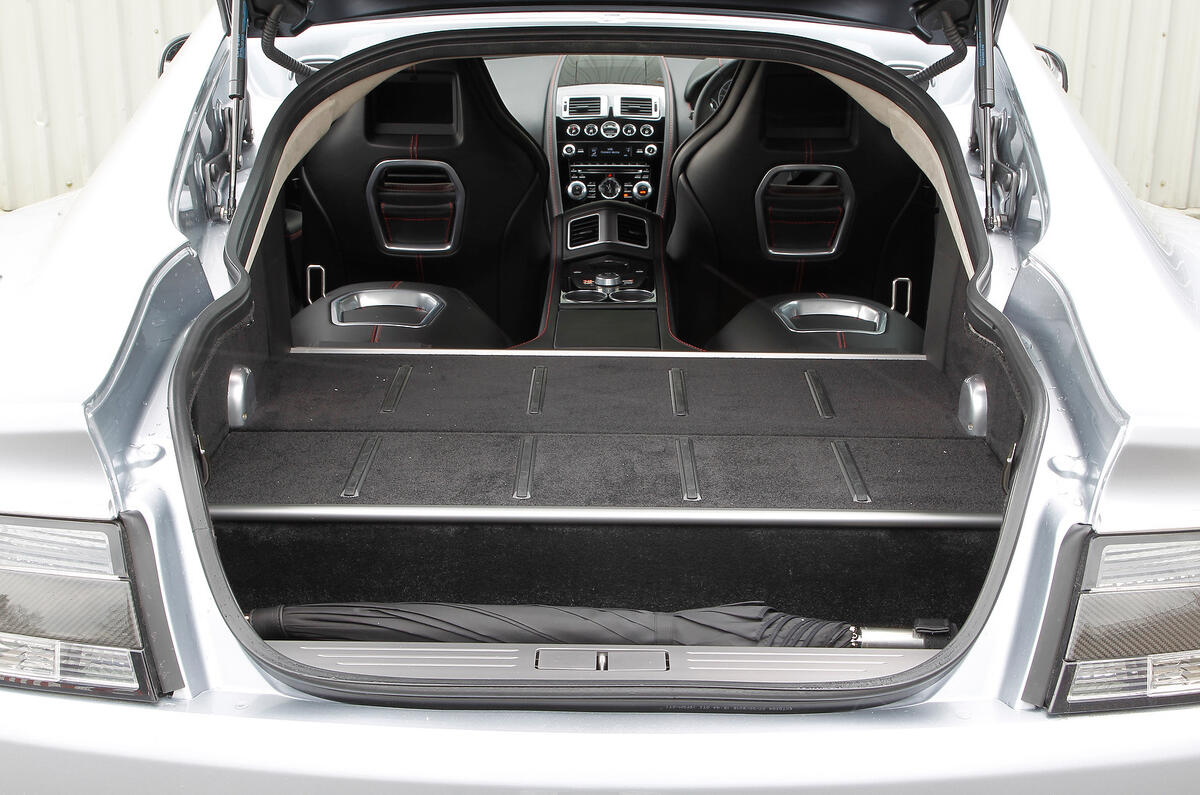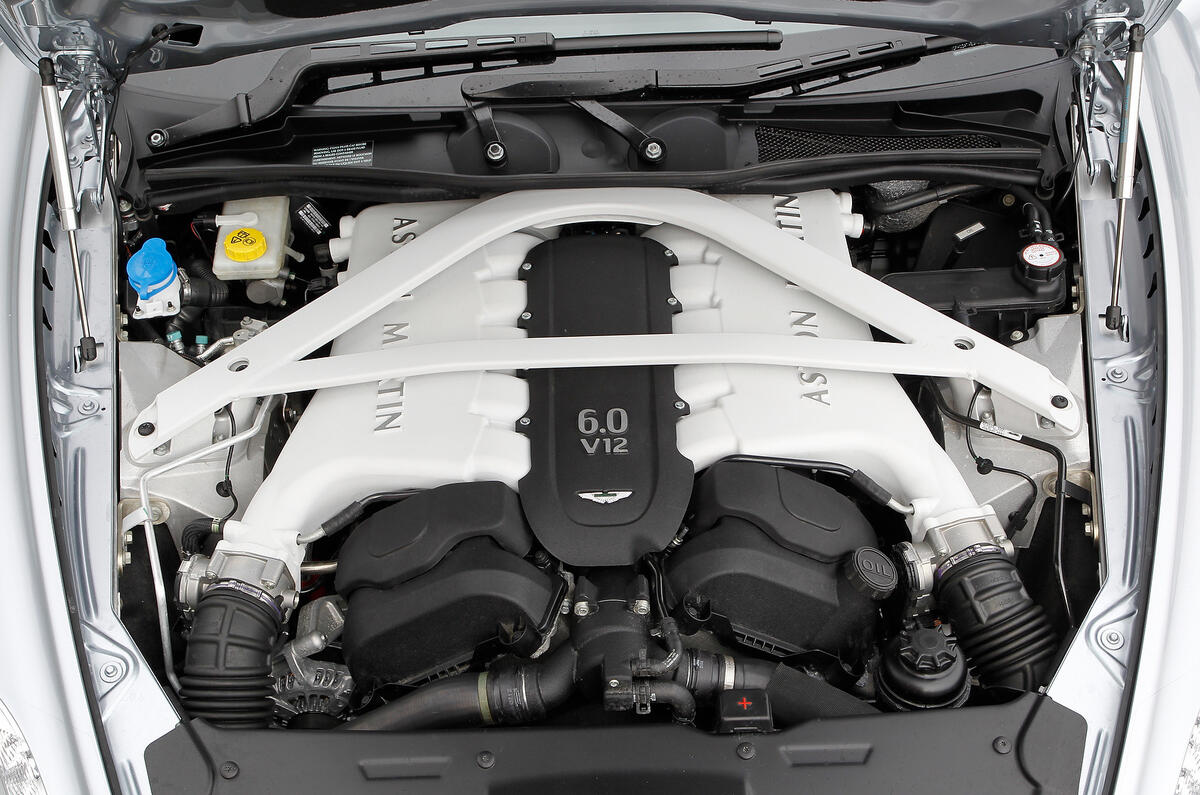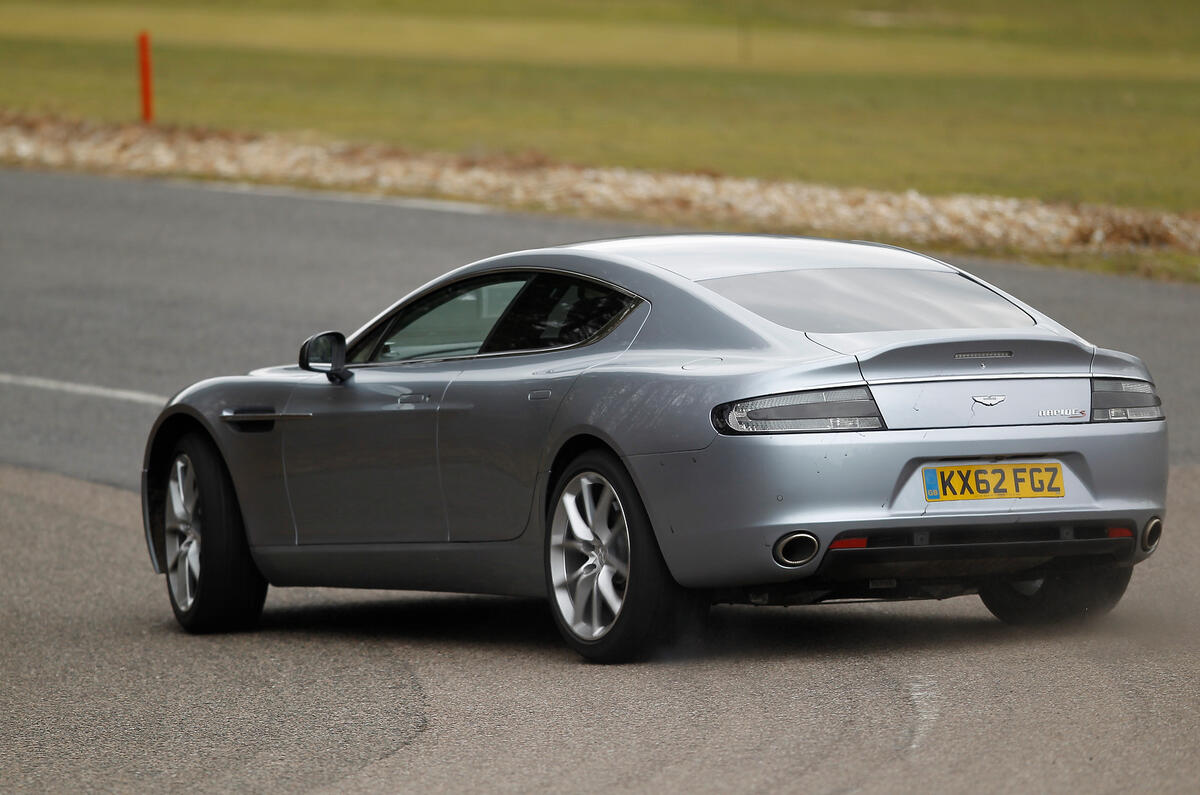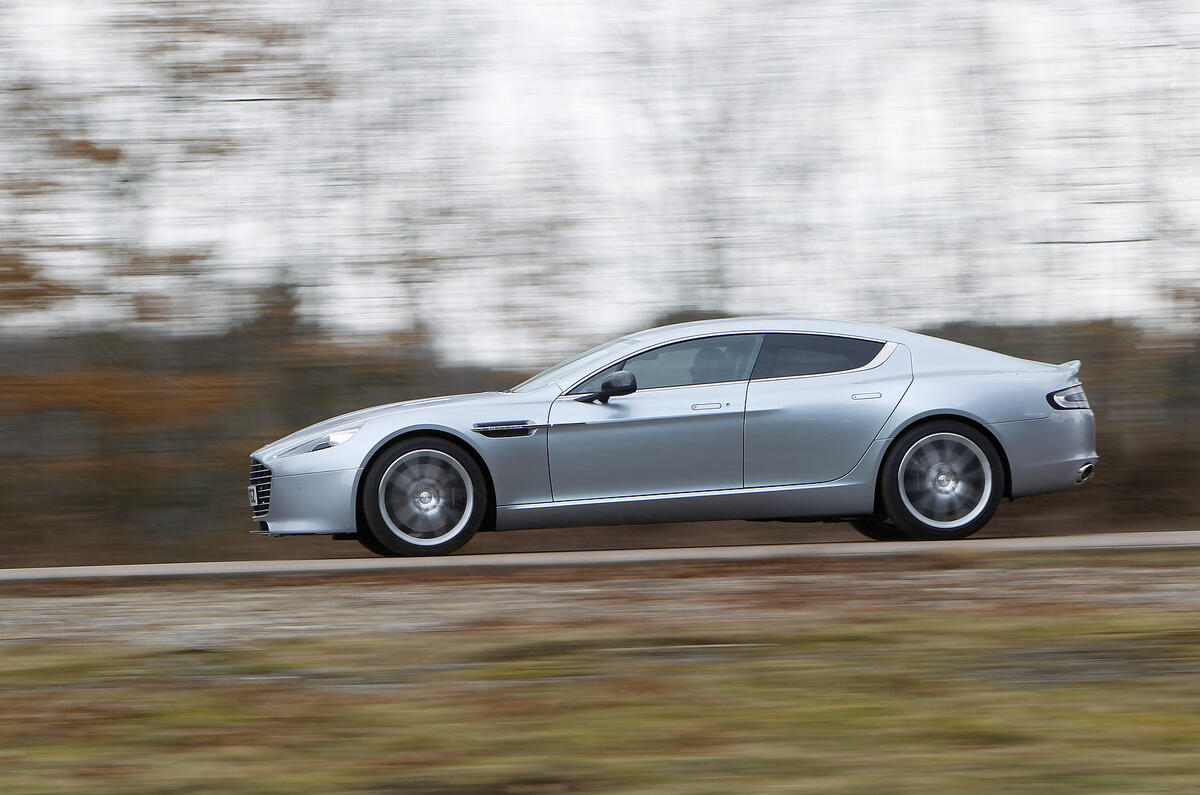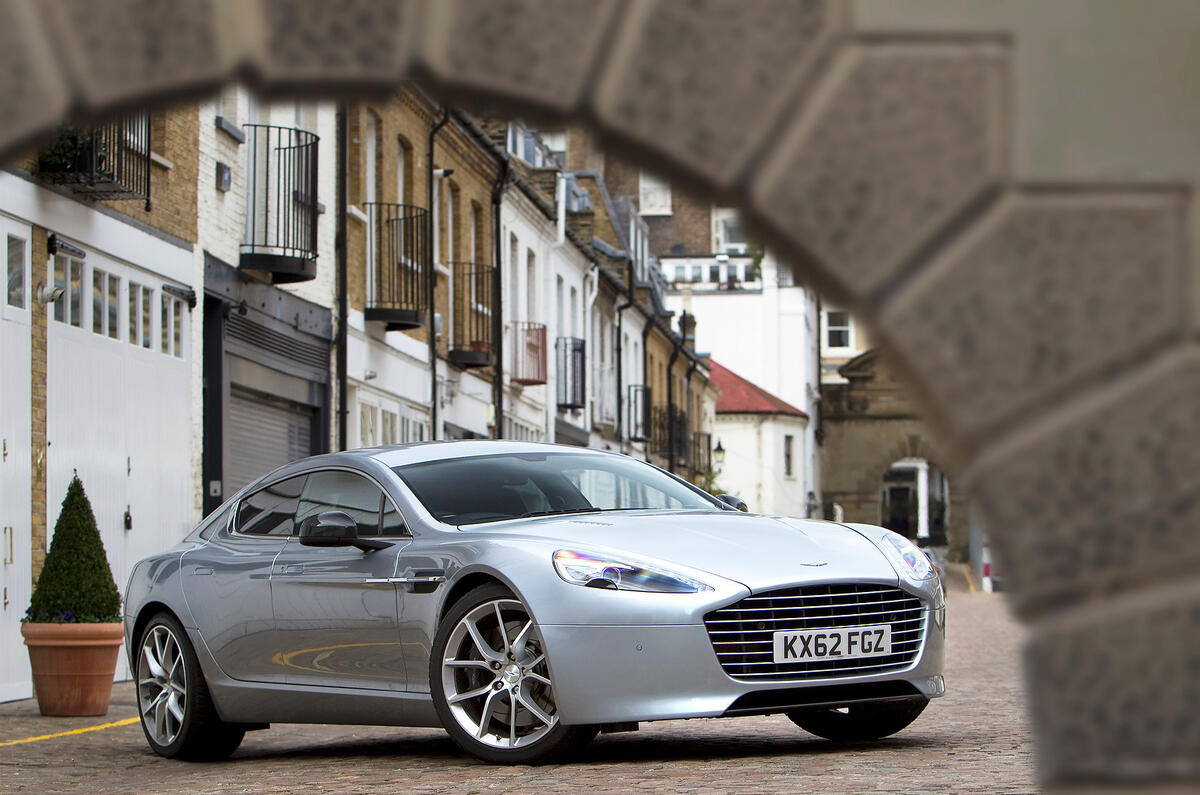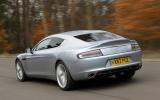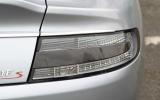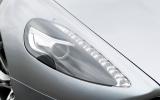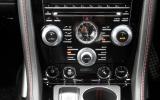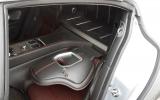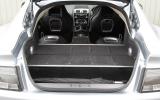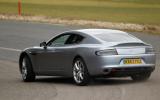At more than five metres long, the Aston Martin Rapide S is not a small car. But the logistics of arranging a V12 engine low under the hood, with a cabin behind it and an aluminium structure that needs to be stiff because the shapely bodywork on top is disinclined to help with the torsional rigidity, mean that something’s gotta give. And in this example, it’s interior volume.
There’s ‘nowt wrong with space in the front of the Aston, mind. The seat is lower and the sill wider than is typical on luxury cars but we’ll forgive that. Likewise the transmission tunnel is tall and the windowline high. Nope, our complaints about the front-cabin of the Aston are the same as usual: patchy ergonomics on the centre console and a set of dials that, while attractive, are similarly unfriendly to the senses.
Still, the leather is beautifully stitched and presented, and the piano black perfectly shiny and deftly fitted.
It’s in the rear where the Aston’s structure gives it the most compromise. The pair of rear chairs – that transmission tunnel and a totally separate ventilation system for rear passengers prevents are triumvirate of rear seats – are small under thigh, and sited low; though are comfortable for kids or smallish adults.
A six foot passenger behind a similarly sized driver is a struggle, though. You’d cope for an airport run or back from a meeting a short hop away, but if you’re looking for the accommodation of a Mercedes-Benz S-Class, or even a Porsche Panamera, you can forget it.
The boot is small if you examine the raw numbers (317-886 litres), and the hatch’s opening fairly narrow. But because the rear seats fold (and can be, optionally, covered when they do) the Rapide is a surprisingly useful load carrier.
As for the standard equipment, the Rapide S comes with 20in alloy wheels shod in Bridgestone Potenza tyres, adaptive suspension, traction control, emergency brake assist and electrically adjustable and dimming mirrors on the outside as standard, while inside there is a lavishly appointed and lovingly crafted leather upholstery, electrically adjustable front seats, heated seats all round, quad-zone climate control, cruise control, parking sensors, a reversing camera, and a Volvo-derived infotainment system complete with sat nav, DAB radio, Bluetooth, iPhone integration, USB connectivity and a 6.5in display.
Naturally, there is a vast list of optional extras to give your Rapide a sense of individuality, such as alternative colours for the brake calipers, a carbonfibre exterior trim pack, various coloured alloys and exhaust trim for the outside, while inside you have your choice of wood trim, ventilated seats, folding rear seats, a Bang & Olufsen stereo and a rear-seat entertainment system to name a few.


